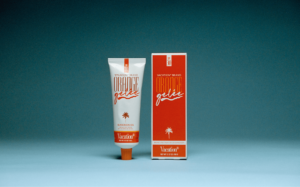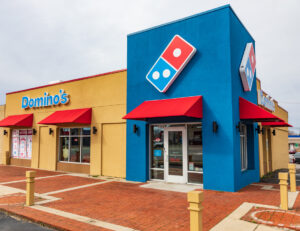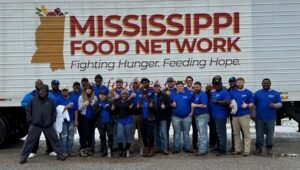How communicating your company’s history can help the business
Procter & Gamble’s corporate storyteller and historian shares how the past can help shape the future,

Adam Kiefaber is a longtime communicator, leading public relations teams at large financial services companies. Follow him on LinkedIn.
For the past decade, every corporate communicator has been trying (and likely struggling) to tell its company’s innovation story. Most of the time, the storylines focus on the tech and ideas of the future and rarely include a look to the past.
Procter & Gamble (P&G)has been regularly enhancing and producing products for more than 180 years under iconic, trusted brands like Charmin, Gillette, Oral B, Pampers and Tide. The company’s website says that it believes “in finding small but meaningful ways to improve lives–now and for generations to come.”
To better understand P&G’s story and how the company shares it, I interviewed Shane Meeker, P&G’s corporate storyteller and historian – and I was surprised at what I found out.
How communicating your past can help your future
Like other Fortune 500 companies, P&G celebrates its history. It has archives and a corporate museum, which is now called the P&G Heritage Center.
When Meeker, who started working at P&G 26 years ago, was asked to take over the Heritage Center, he was surprised by what he didn’t know.
“Since I was someone who had previously worked in the business, I immediately thought to myself that I would have loved to know that this was all here,” said Meeker, who has managed the Heritage Center for the past 11 years. “I knew of the archives but didn’t realize how much was really here and how it could have helped me with my work.”
With the help of his team of storytellers and communicators, the P&G Heritage Center has grown to be more than a celebration of key dates and product launches in the company’s history. It has become an employee destination where colleagues break silos across brands and functions to creatively dream up new ideas.
“It is so important that you don’t get siloed in your area of the business,” Meeker said. “You have to ask yourself if you actually know the innovations that are happening across your company and if you are keeping up with them because it might just spark the idea you need.”
There are many interesting stories at the Heritage Center about cross-brand innovation. One company favorite is about an oral care engineer, who after determining what was needed to whiten teeth at home had to figure out a way his product could stick to teeth and keep out the saliva which would reduce its effectiveness. To do this, the oral care engineer worked with an expert from P&G’s plastic food wrap function. The result was Crest White Strips, which had nearly $80 million in sales in 2018.
“These stories need to be accessible,” Meeker said. “And you must also be proactive in sharing them because these are key innovations that could get people thinking differently.”
How admiring your past failures drives innovation
The most popular exhibit at P&G’s Heritage Center is its Wall of Failures. It quotes JG Pleasants, the former P&G VP of R&D from 1955-1969, that reads: “No company can afford the luxury of rediscovering its own prior knowledge.”
Under Meeker’s watch, the wall itself has grown in popularity and now has a digital touchscreen that can be continuously updated and studied by visitors who can learn more about the projects that didn’t work – along with write ups of what the original objective was, what happened and why it wasn’t successful and what could have been done differently.
“The Wall of Failures doesn’t look back, it looks through,” Meeker said. “It can help you learn what not to do and what to be careful of. The higher-level learning has made it so popular that people want to access it all the time and constantly request for more examples including ones that happen outside the company.”
While the focus of the wall is on failures, Meeker pointed out that it is important to remember that not all these failed ideas are bad. He notes that many could have failed for other reasons, for example, it may have not been the right time or had issues in its initial design. One favorite story that is told on the wall is about Tide PODSÒ. Despite being launched as a new product in 2012, the original idea for the laundry detergent pacs at P&G failed in 1960.
These stories are so powerful that Meeker says it is important to be proactive in his communications. By driving more awareness to the Heritage Center, its Wall of Failures and making it more accessible through digital tools, he hopes his colleagues will be more aware of its value, so they are not surprised – like he was – when they see it for the first time.







PG may save thousands of American lives monthly, and millions a year worldwide, with a public service information campaign on “Clean Away Five Health Hazards.”
PR Daily correctly points out how P&G is using old failures to increase future success in serving the public interest. An allstar team of communicators, selected from today’s dedicated teams of top P&G communicators, can show important realities:
.1. Major milestones in P&G’s 180 years of success in advancing the cause of cleanliness to prevent and defeat disease.
.2. Ten ways family and individual homemakers can use cleanliness in important ways against disease.
.3. Diploma-like Awards of Excellence for windows and walls of restaurants, school cafeterias and company lunchrooms that meet and exceed the highest standards in protecting health by promoting cleanliness.
.4. Booklets printed and online with “how to” (and “how NOT to”) information in achieving cleanliness standards that help defeat disease.
.5. A TV and online documentary with tips and tricks from great home economists to help win the war of cleanliness versus disease.
.6. For newspapers a “Quick Quiz” to help readers test their knowledge of how disease can be defeated in case after case with more and smarter
cleanliness measures.
.7. For community groups, lecturers from colleges and hospitals can
explain new realities about old health problems and how to defeat them.
.8. “Avoid These Common Health Hazards” can be a subject presented to the media by health and home economics experts at local companies in media interviews.
.9. An art contest for elementary schools, and an essay contest for high schools, on doing more to use cleanliness protection against health hazards.
.10. News in pictures from great universities worldwide on more and better ways to use cleanliness that defeats disease.
All these thrusts can be managed regionally and locally.
There are centuries-old diseases that great hospitals, universities and companies are on the verge right now of defeating partly with new and smarter uses of cleanliness. Columbia University has perhaps the world’s #1 doctor expert on MDS, a preleukemia ailment that would be closer to defeat if MDS is defeated.
Memorial Sloan Kettering Cancer Center recently hired away from Duke a brilliant young doctor to treat MDS, gave her an awesomely gifted nurse and surrounded them with a world-class team of medical experts in hematology, radiation, internal medicine, pharmacy, cardiology, home economics and other specialties that together may eventually bring success against MDS, perhaps soon.
The need is certainly there for more success of cleanliness versus disease, the opportunity is there to advance this cause, and P&G may have both the money and the will to make it happen.